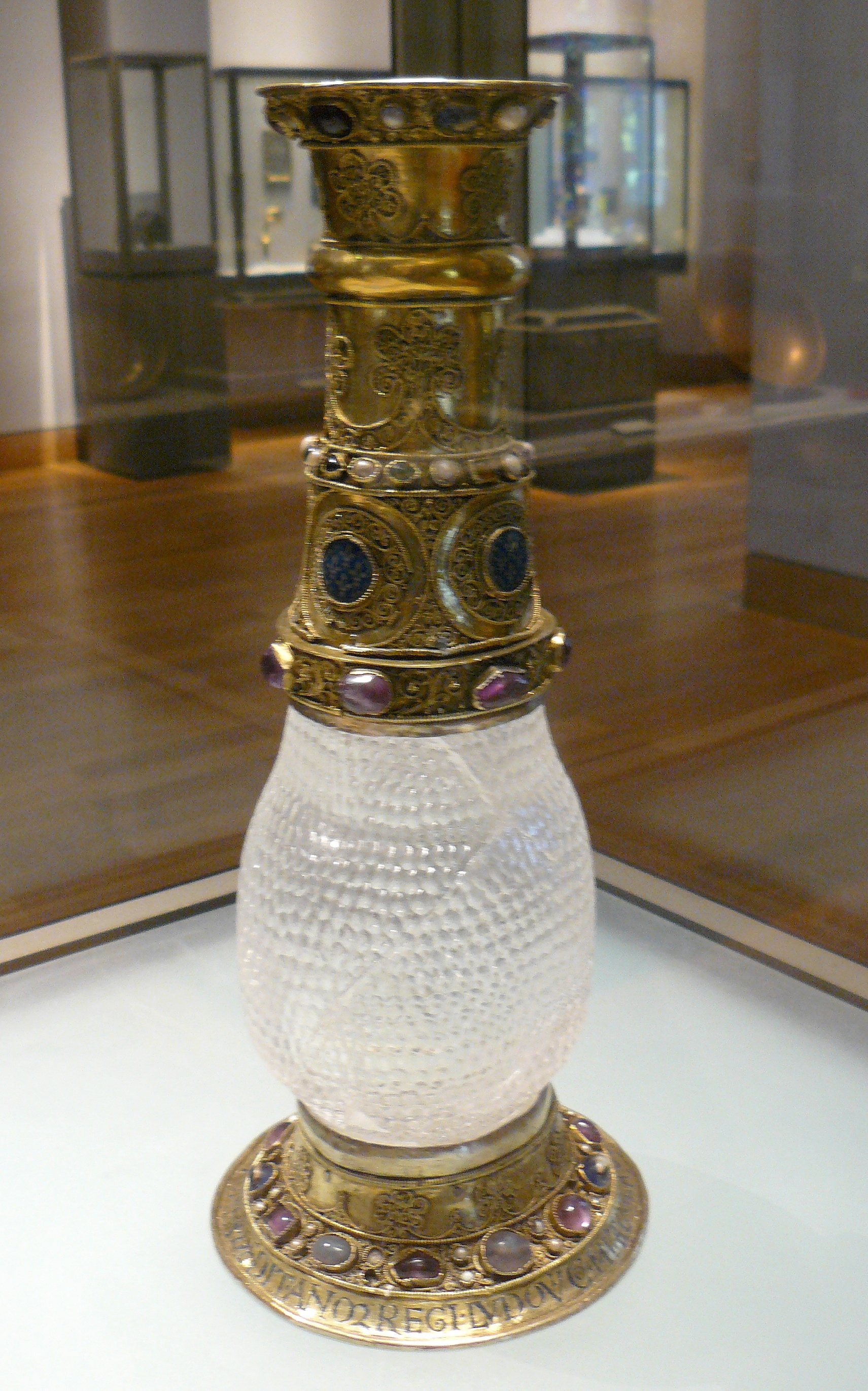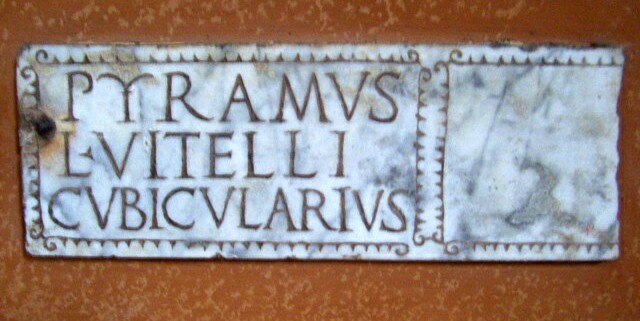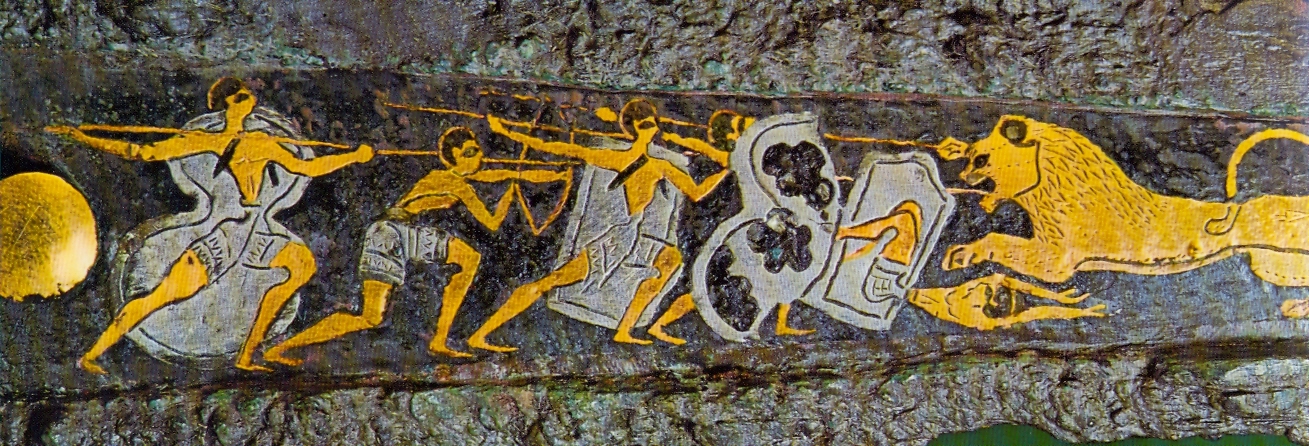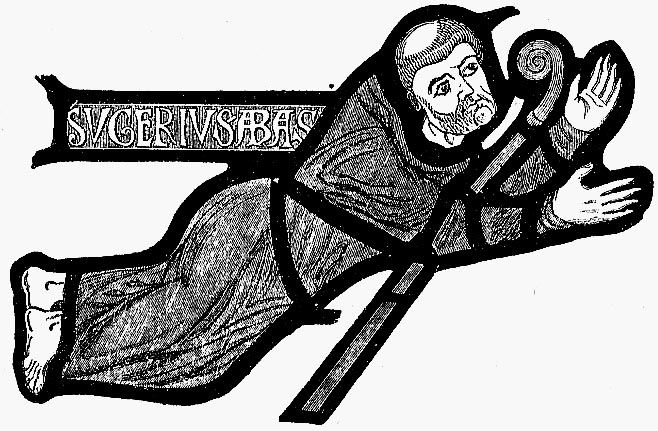|
Suger's Eagle
Suger's Eagle (''Aigle de Suger'') is an ancient Egyptian porphyry vase mounted in a medieval silver-gilt eagle. It is now displayed along with the French regalia in the Galerie d'Apollon at the Louvre. The vase likely dates to the second century AD. According to Abbot Suger, abbot of Saint-Denis (d. 1151), in his ''De administratione'', he found, "lying idly in a chest for many years, an Egyptian porphyry vase admirably shaped and polished." In his own words, he determined to adapt and transfer (''adaptavimus ... transferre'') it into a liturgical vessel "in the form of an eagle" (''in aquilae formam''), a symbol of Christ. Suger's Eagle is a typical case of the "careful preservation of the ancient relic in a setting which leaves it completely intact." On the bottom of the eagle is a nielloed '' titulus'': "This stone deserves to have mounts of gold and gems. / It was marble. Its settings are more precious than marble." Inscribed around the base of the neck, above the lip of ... [...More Info...] [...Related Items...] OR: [Wikipedia] [Google] [Baidu] |
Suger's Eagle
Suger's Eagle (''Aigle de Suger'') is an ancient Egyptian porphyry vase mounted in a medieval silver-gilt eagle. It is now displayed along with the French regalia in the Galerie d'Apollon at the Louvre. The vase likely dates to the second century AD. According to Abbot Suger, abbot of Saint-Denis (d. 1151), in his ''De administratione'', he found, "lying idly in a chest for many years, an Egyptian porphyry vase admirably shaped and polished." In his own words, he determined to adapt and transfer (''adaptavimus ... transferre'') it into a liturgical vessel "in the form of an eagle" (''in aquilae formam''), a symbol of Christ. Suger's Eagle is a typical case of the "careful preservation of the ancient relic in a setting which leaves it completely intact." On the bottom of the eagle is a nielloed '' titulus'': "This stone deserves to have mounts of gold and gems. / It was marble. Its settings are more precious than marble." Inscribed around the base of the neck, above the lip of ... [...More Info...] [...Related Items...] OR: [Wikipedia] [Google] [Baidu] |
Aigle De Suger
, neighboring_municipalities= Vaud: Yvorne, Leysin, Ormont-Dessous, Ollon; Valais: Vouvry, Collombey-Muraz , twintowns = L'Aigle (France), Tübingen (Germany), Bassersdorf (Switzerland) } Aigle (French for "eagle", ; frp, Âgllo) is a historic town and a municipality and the capital of the district of Aigle in the canton of Vaud in Switzerland. The official language of Aigle is Swiss French. Geography Aigle lies at an elevation of about south-southeast of Montreux. It is on the east edge of the Rhône valley, at the foot of the Swiss Alps. Aigle has an area, , of . Of this area, or 34.1% is used for agricultural purposes, while or 37.4% is forested. Of the rest of the land, or 25.6% is settled (buildings or roads), or 2.7% is either rivers or lakes and or 0.6% is unproductive land. [...More Info...] [...Related Items...] OR: [Wikipedia] [Google] [Baidu] |
Saint-Denis Abbey
The Basilica of Saint-Denis (french: Basilique royale de Saint-Denis, links=no, now formally known as the ) is a large former medieval abbey church and present cathedral in the commune of Saint-Denis, a northern suburb of Paris. The building is of singular importance historically and architecturally as its choir, completed in 1144, is widely considered the first structure to employ all of the elements of Gothic architecture. The basilica became a place of pilgrimage and a necropolis containing the tombs of the Kings of France, including nearly every king from the 10th century to Louis XVIII in the 19th century. Henry IV of France came to Saint-Denis to formally renounce his Protestant faith and become a Catholic. The Queens of France were crowned at Saint-Denis, and the royal regalia, including the sword used for crowning the kings and the royal sceptre, were kept at Saint-Denis between coronations. The site originated as a Gallo-Roman cemetery in late Roman times. The arch ... [...More Info...] [...Related Items...] OR: [Wikipedia] [Google] [Baidu] |
Romanesque Art
Romanesque art is the art of Europe from approximately 1000 AD to the rise of the Gothic Art, Gothic style in the 12th century, or later depending on region. The preceding period is known as the Pre-Romanesque period. The term was invented by 19th-century art historians, especially for Romanesque architecture, which retained many basic features of Roman architecture, Roman architectural style – most notably round-headed arches, but also barrel vaults, apses, and Acanthus (ornament), acanthus-leaf decoration – but had also developed many very different characteristics. In Southern France, Spain, and Italy there was an architectural continuity with the Late Antique, but the Romanesque style was the first style to spread across the whole of Catholic Europe, from Sicily to Scandinavia. Romanesque art was also greatly influenced by Byzantine art, especially in painting, and by the anti-classical energy of the decoration of the Insular art of the British Isles. From these element ... [...More Info...] [...Related Items...] OR: [Wikipedia] [Google] [Baidu] |
Eleanor Of Aquitaine Vase
A rock crystal vase is a vase made of rock crystal, a type of hardstone carving. Such vases were rare, expensive, and decorated with gold and jewels, used by royalty in Europe. A rock crystal vase that probably originated in the seventh century was given to Duke William IX of Aquitaine (the Troubadour) by a Muslim ally (probably Abd al-Malik Imad ad-DawlaG.T. Beech, The Eleanor of Aquitaine Vase, William IX of Aquitaine, and Muslim Spain, in ''Gesta'' 32 (1993), pp3-10). When Duchess Eleanor of Aquitaine, William IX's granddaughter, married King Louis VII of France in 1137, she gave him the rock crystal vase as a wedding present. The inscription on it says he, in turn, gave it to the Abbey of St.-Denis. It is now in the Louvre in Paris and is the only artifact of Eleanor's known to exist today. Another was a crystal and gold posset that the Spanish ambassador gave Queen Mary I of England and Philip of Spain as a betrothal gift. It was made by Benvenuto Cellini and the wh ... [...More Info...] [...Related Items...] OR: [Wikipedia] [Google] [Baidu] |
French Revolution
The French Revolution ( ) was a period of radical political and societal change in France that began with the Estates General of 1789 and ended with the formation of the French Consulate in November 1799. Many of its ideas are considered fundamental principles of liberal democracy, while phrases like ''liberté, égalité, fraternité'' reappeared in other revolts, such as the 1917 Russian Revolution, and inspired campaigns for the abolition of slavery and universal suffrage. The values and institutions it created dominate French politics to this day. Its causes are generally agreed to be a combination of social, political and economic factors, which the ''Ancien Régime'' proved unable to manage. In May 1789, widespread social distress led to the convocation of the Estates General, which was converted into a National Assembly in June. Continuing unrest culminated in the Storming of the Bastille on 14 July, which led to a series of radical measures by the Assembly, i ... [...More Info...] [...Related Items...] OR: [Wikipedia] [Google] [Baidu] |
Treasury Of Saint-Denis
The Treasury of Saint-Denis, kept at the Basilica of Saint-Denis in Paris until the French Revolution, was the main repository of the ''regalia'' of the Kingdom of France, including the ''ancien régime'' portion of what are now known as the French Crown Jewels. Its surviving items are presently scattered between the Louvre, the ''Cabinet des Médailles'' of the French National Library, and other museums. A complementary set of coronation-related ''regalia'' was kept at Reims Cathedral, where some remain exhibited at the Palace of Tau. History The abbey of Saint Denis became a royal necropolis with the burial there of Dagobert I in the 7th century, confirmed as such by the burials of Charles Martel and Pepin the Short, and became an anchor shrine of the French monarchy under the early Capetian dynasty. Major donors also included Charles the Bald in the 9th century, Louis VI and Louis VII at the time when Suger was both the Saint-Denis abbot and a key royal adviser, Philip ... [...More Info...] [...Related Items...] OR: [Wikipedia] [Google] [Baidu] |
Goldsmith
A goldsmith is a Metalworking, metalworker who specializes in working with gold and other precious metals. Nowadays they mainly specialize in jewelry-making but historically, goldsmiths have also made cutlery, silverware, platter (dishware), platters, goblets, decorative and serviceable utensils, and ceremonial or religious items. Goldsmiths must be skilled in forming metal through file (tool), filing, brazing, soldering, sawing, forging, Casting (metalworking), casting, and polishing. The trade has very often included jewelry-making skills, as well as the very similar skills of the silversmith. Traditionally, these skills had been passed along through apprenticeships; more recently jewelry arts schools, specializing in teaching goldsmithing and a multitude of skills falling under the jewelry arts umbrella, are available. Many universities and junior colleges also offer goldsmithing, silversmithing, and metal arts fabrication as a part of their fine arts curriculum. Gold Com ... [...More Info...] [...Related Items...] OR: [Wikipedia] [Google] [Baidu] |
Titulus (inscription)
:''See also Titulus (Roman Catholic) for Roman churches called tituli, or titulus (other) for more meanings.'' ''Titulus'' (Latin "inscription" or "label", the plural ''tituli'' is also used in English) is a term used for the labels or captions naming figures or subjects in art, which were commonly added in classical and medieval art, and remain conventional in Eastern Orthodox icons. In particular the term describes the conventional inscriptions on stone that listed the honours of an individual or that identified boundaries in the Roman Empire. A titulus pictus is a merchant's mark or other commercial inscription. The sense of "title", as in "book title", in modern English derives from this artistic sense, just as the legal sense derives from plainer inscriptions of record. Use in Western art The increasing reluctance of the art of the West to use ''tituli'' was perhaps because so few people could read them in the Early Medieval period, and later because they reduce ... [...More Info...] [...Related Items...] OR: [Wikipedia] [Google] [Baidu] |
Niello
Niello is a black mixture, usually of sulphur, copper, silver, and lead, used as an inlay on engraved or etched metal, especially silver. It is added as a powder or paste, then fired until it melts or at least softens, and flows or is pushed into the engraved lines in the metal. It hardens and blackens when cool, and the niello on the flat surface is polished off to show the filled lines in black, contrasting with the polished metal (usually silver) around it. It may also be used with other metalworking techniques to cover larger areas, as seen in the sky in the diptych illustrated here. The metal where niello is to be placed is often roughened to provide a key. In many cases, especially in objects that have been buried underground, where the niello is now lost, the roughened surface indicates that it was once there. Statistical consideration Niello was used on a variety of objects including sword hilts, chalices, plates, horns, adornment for horses, jewellery such as bra ... [...More Info...] [...Related Items...] OR: [Wikipedia] [Google] [Baidu] |
Suger
Suger (; la, Sugerius; 1081 – 13 January 1151) was a French abbot, statesman, and historian. He once lived at the court of Pope Calixtus II in Maguelonne, France. He later became abbot of St-Denis, and became a close confidant to King Louis VII, even becoming his regent when the king left for the Second Crusade. Together with the king, he played a part in the centralization in the growing French Kingdom. He authored writings on abbey construction and was one of the earliest patrons of Gothic architecture and is seen as widely credited with popularizing the style. Life Suger's family origins are unknown. Several times in his writings he suggests that his was a humble background, though this may just be a topos or convention of autobiographical writing. In 1091, at the age of ten, Suger was given as an oblate to the abbey of St. Denis, where he began his education. He trained at the priory of Saint-Denis de l'Estrée, and there first met the future king Louis VI of Franc ... [...More Info...] [...Related Items...] OR: [Wikipedia] [Google] [Baidu] |
Art Of Ancient Egypt
Ancient Egyptian art refers to art produced in ancient Egypt between the 6th millennium BC and the 4th century AD, spanning from Prehistoric Egypt until the Christianization of Roman Egypt. It includes paintings, sculptures, drawings on papyrus, faience, jewelry, ivories, architecture, and other art media. It is also very conservative: the art style changed very little over time. Much of the surviving art comes from tombs and monuments, giving more insight into the ancient Egyptian afterlife beliefs. The ancient Egyptian language had no word for "art". Artworks served an essentially functional purpose that was bound with religion and ideology. To render a subject in art was to give it permanence. Therefore, ancient Egyptian art portrayed an idealized, unrealistic view of the world. There was no significant tradition of individual artistic expression since art served a wider and cosmic purpose of maintaining order (Ma'at). Art of Pre-Dynastic Egypt (6 ... [...More Info...] [...Related Items...] OR: [Wikipedia] [Google] [Baidu] |


.jpg)







.jpg)